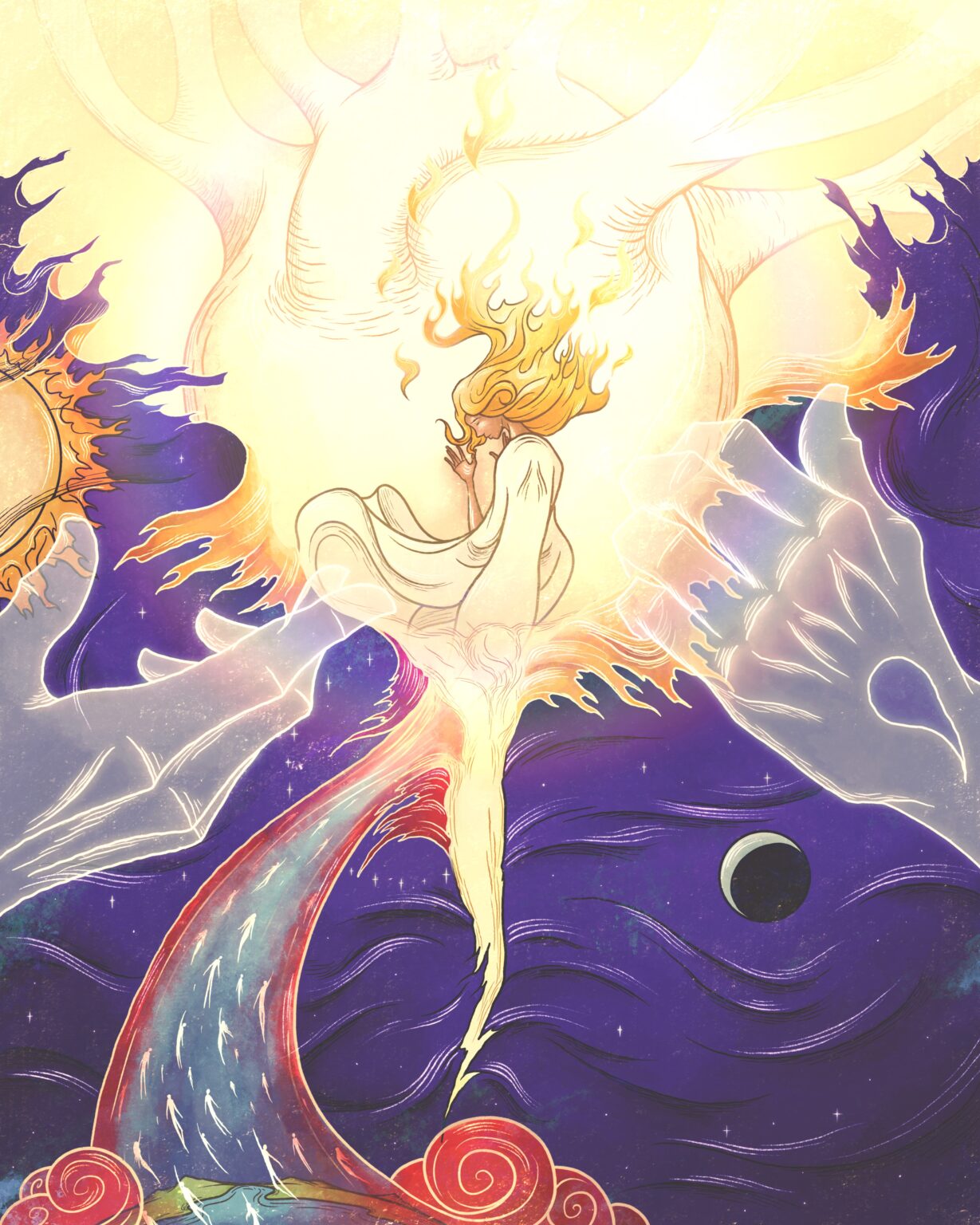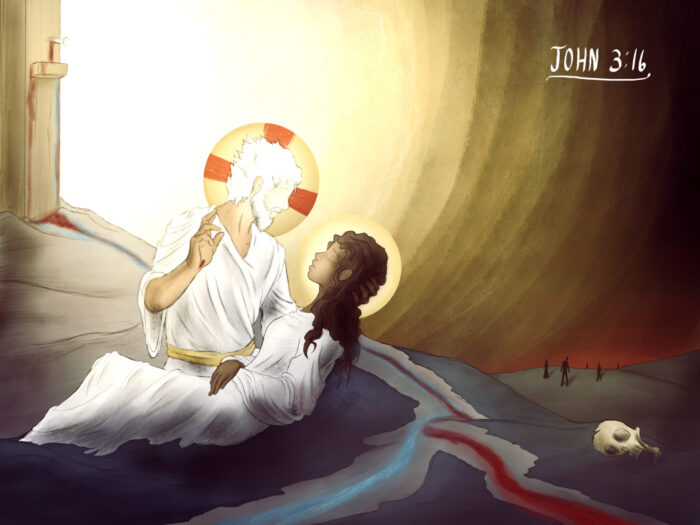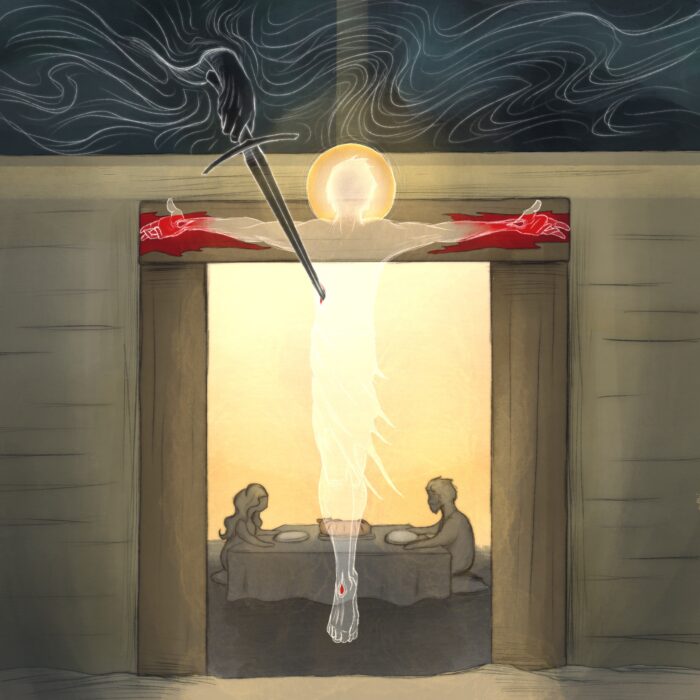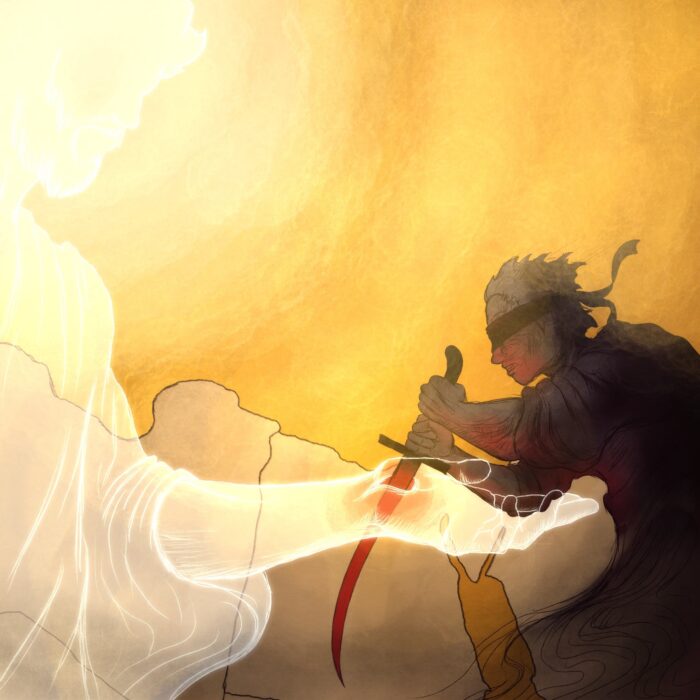Today’s picture is a bit different than normal in that it visually expounds a *concept* rather than a specific biblical text. The reason for this is that it was created as a gift to a friend upon the completion of his doctoral thesis and the theme of the image is based on the theme of his thesis.
Specifically, my friend was doing his studies on St. Augustine’s view of the imagination and the application of this understanding in his preaching. If you’re interested in how this works itself out in today’s image, read on!
In his 55th epistle, Augustine notes that the bare presentation of spiritual reality can sometimes leave the soul unmoved, but when a spiritual truth is mediated to the soul through a sign or symbol, a greater ardor is often kindled. He goes on to make the fascinating point that the imaginative act of *passage through* a “bodily likeness” *into* the spiritual reality it symbolizes can itself set the soul “aflame like the fire in a coal when stirred up, [such that it] is carried with a more ardent love toward rest.”
I’d suggest that John calls his readers into precisely such a moment of imaginative “passage” in his depiction of the Pierced Christ in John 19:34-37.
The image the Beloved Disciple’s words set before the eyes of his audience is profoundly of this world: a naked man, beaten, thorn-crowned, and crucified, from whose side pour the mortal fluids of blood and water.
And yet, to the Resurrection-illumined, Spirit-instructed, Scripturally-informed Johannine imagination, the form of the Pierced One becomes—at risk of putting it too simply—the bodily “Sign” and “Symbol” of God Himself. Here, visualized before our eyes by the inspired words of the Beloved, is the Mysterium Dei articulated in those most intimately familiar of mediums: flesh, blood, water, and our own death.
I’ve tried to depict this moment of imaginative ‘passage’ by presenting all the visible world as the ‘veil’ of the Temple. This veil is torn through Christ’s death—as is witnessed by the Synoptic gospels. Here, however, I’ve depicted the crucified Christ himself as the tear in the veil, suggesting that precisely this Pierced One is the way of our passage—the “door open in heaven,” if you will (Rev.4:1, cf. Jn 10:9, 14:6)—into the presence of God (and, indeed, John—who alone does not mention the rending of the temple veil—likely envisions the piercing of the side of Christ [the True Temple, Jn 2:21] as itself being that rending).
The blood and water from Christ’s side pour down over the earth, and his people flow up *through* these bodily signs *into* the spiritual reality within the veil, there to become the Spirit-filled Bride (both her identification with the Spirit and her perfect ardor for her Lord are pictured in the seven-fold flames of her hair).
Those who have passed through the sign into the reality find that the sign of the Crucified and Risen Jesus itself (himself) *is* the reality into which this sign eternally opens (Jn 14:9). I’ve tried to show this by echoing the famous scene in which Jesus draws back his clothing to reveal the wound in his side, by which Thomas comes to know his Lord and His God (Jn 20:27-28). Here, the whole veil of the intelligible cosmos stands as the ‘clothing’ of the slain and risen Jesus, drawn back in the piercing of his flesh upon the resurrection-illumined cross so that His own might look by faith upon—and so enter into—the eternal life that is the revealed identity of God Himself (Jn 17:3, 19:37, cf. Zech 12:10). This passage *through* the form of the Pierced One *into* the ever-opening heart of God disclosed precisely in that form is the imaginative transversal by which the soul is ‘set aflame like the fire in a coal’ and carried with ardent love toward its everlasting rest.




